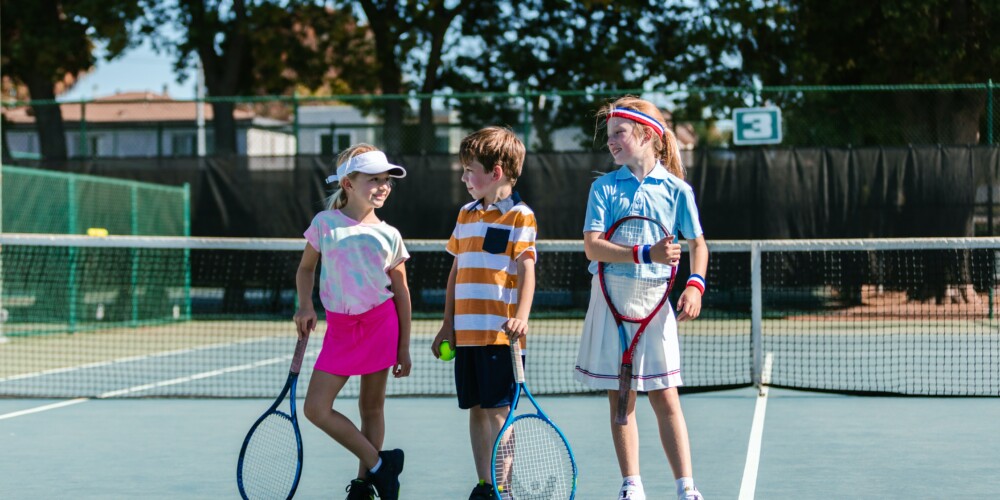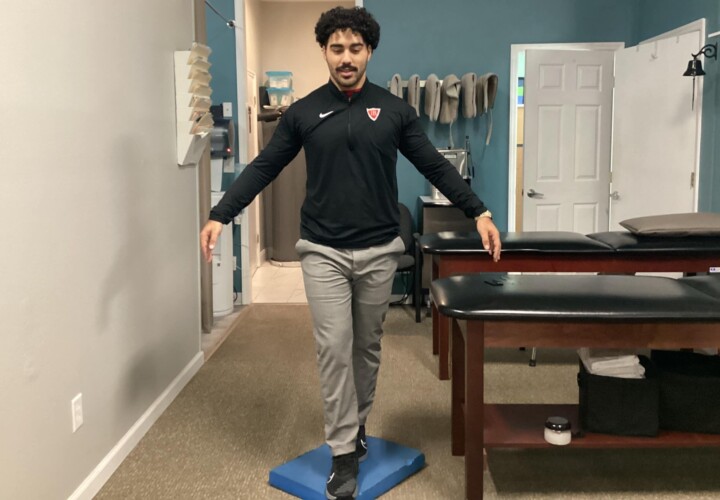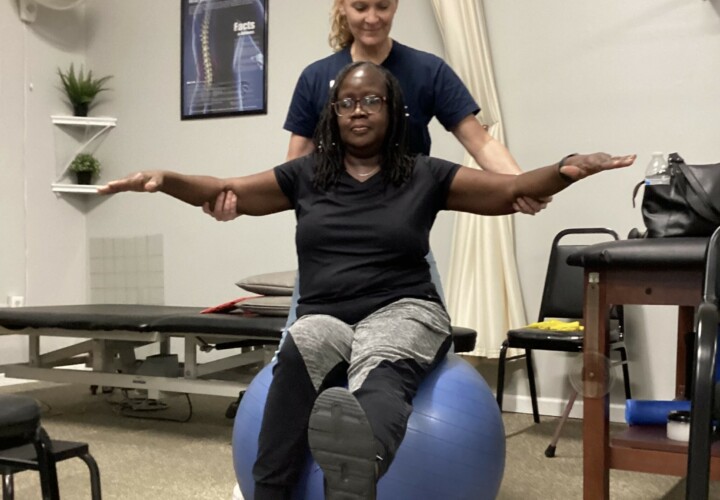“Almost one-third of all injuries incurred in childhood are sports-related injuries.”1 Of the 30 million adolescents that play sports each year more than 3.5 million find themselves injured at some point during the season.1 Sports are an important part of childhood development. Participants develop social-emotional skills such as the values of teamwork, determination, and responsibility that are important throughout life. Sports help to keep children and teens active which decreases their chances of childhood obesity, improves motor skills and cognitive function as well as overall emotional and physical wellbeing. While participation in sports is beneficial, it can lead to injuries and put participants at risk of developing future impairments if they don’t care for their bodies properly. To help manage these risks, there are several ways to help prevent injuries which will each be discussed. Conditioning, proper warm up, nutrition and hydration, utilization of proper equipment, and rest and recovery are all key factors in injury prevention.
Conditioning is a time dedicated to preparing the body for the sports season or training period ahead. While some adolescent athletes play sports year-round, there is often a time out of season or a period of rest between sports. In preparation for the start of a sport, it is important to consider a period of preparatory training to enhance overall strength, cardiovascular endurance, and flexibility.2 Practicing in similar conditions to the sport season is key in being physically prepared. Building endurance for the length of game, acclimating the body to the temperature of the environment, and preparing the joints for the load of additional weight from protective equipment can all help prevent injuries when the sports season comes around. Protective gear such as pads and helmet can be bulky and heavy, so it is important to prepare the body for the additional weight and heat that comes from wearing it for the duration of the game. More about protective equipment will be discussed below.
Proper warm up before exercise helps to prepare the muscles for activity by bringing adequate blood flow to structures that will be utilized. There have also been studies to show that progressing through similar motions utilized in sport to warm up the body can decrease soreness after the game or training.3 Stretching can be beneficial for athletes especially in sports where flexibility is key. Baseball players, gymnasts, and cheerleaders are examples of athletes who require flexibility and should progress through ranges that will be completed in sport prior to starting to reduce changes of muscle strain or tear.
Nutrition is a key component in maintaining a healthy body capable of performing sports. Proper nutrition with intake of essential proteins, vitamins, and carbohydrates as well as an adequate amount of water help to flush out toxins and repair structures from micro damage that occurs during exercise and after injury has occurred. Protein is an important enzyme utilized for energy and muscle building.4 Collagen, which has not been previously discussed, is utilized in the body to repair and strengthen connective tissues such as joints, tendons, and ligaments. Vitamins such as Vitamin D and Calcium help to keep bones strong which can play a role in the prevention of stress fractures during sport.4 Carbohydrates provide a great source of energy which is quickly utilized in adolescent athletes. Lack of energy can lead to injuries due to fatigue, which will be discussed further below. Hydration is essential, especially in outdoor sports where fluids are lost through sweat at a fast rate. Water plays a role in muscle function, blood pressure, and circulation of nutrients through the body. Dehydration also leads to risk of muscle cramps, heat exhaustion and even heat stroke.5
To continue, having the correct gear or equipment is essential to injury prevention during a sports season. Proper shoes help to support the feet and ankles during planting motions and side to side movement. Having the correct shoe can decrease the likelihood of ankle sprains and other common ankle and knee injuries. Protective equipment such as pads can add weight to the athlete depending on the sport but help to spread the force of impact from tackling or falling. Helmets have significantly reduced the number of traumatic brain injuries upon fall, collision, or other impact, including decreasing the risk of concussion.6
Finally, rest and recovery allows the body time to repair. After training or participation in sports, inflammation and breakdown of tissues can occur. By allowing the body time to refuel, store up and circulate nutrition and enzymes as discussed above, athletes will be more prepared for their next bout of activity. Rest can also reduce chances of injury due to fatigue and overuse and should be utilized by all athletes.
These are just a few of the ways that adolescent athletes can be prepared and decrease their chances of injury. Participating in sports is a fun and healthy part of growing up. While injuries are common, many are preventable. Having the knowledge to improve upon certain aspects and to be more prepared for the sports season ahead can lead to decreased chance of injury, longer playing time, and better overall health.
References:
- Stanford Medicine Children’s health – lucile packard children’s hospital stanford. Stanford Medicine Children’s Health – Lucile Packard Children’s Hospital Stanford. https://www.stanfordchildrens.org/en/default.
- Faigenbaum AD. Preseason conditioning for high school athletes.Strength and Conditioning Journal. 2001;23(1):70. doi:10.1519/00126548-200102000-00017
- Jamtvedt G, Herbert R, Flottorp S, et al. A pragmatic randomised trial of stretching before and after physical activity to prevent injury and soreness.Journal of Science and Medicine in Sport. 2010;12. doi:10.1016/j.jsams.2009.10.379
- Turnagöl HH, Koşar ŞN, Güzel Y, Aktitiz S, Atakan MM. Nutritional considerations for injury prevention and recovery in combat sports.Nutrients. 2021;14(1):53. doi:10.3390/nu14010053
- Health C. Importance of hydration for young athletes – children’s health. Importance of Hydration for Young Athletes – Children’s Health. https://www.childrens.com/health-wellness/the-importance-of-hydration-for-young-athletes.
- Emery CA. Injury prevention in kids’ adventure and Extreme sports: Future directions.Research in Sports Medicine. 2018;26(sup1):199-211. doi:10.1080/15438627.2018.1452239



